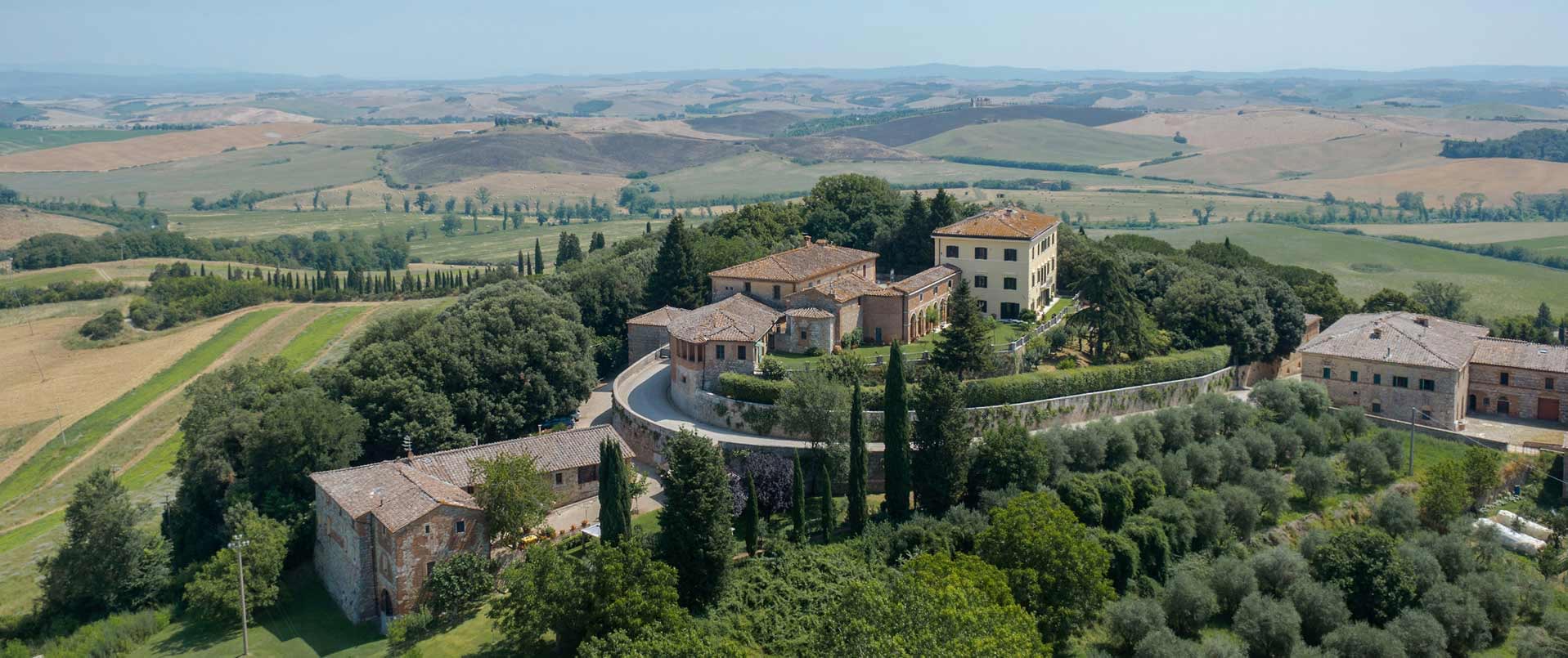
The Abbey of Lucedio was founded in 1123 by Cistercian monks from Burgundy who reclaimed the territory and were the first to introduce rice cultivation in Italy in the mid-1400s.
Over time, thanks to its strategic geographic position along the Via Francigena pilgrim route, the Abbey became a thriving centre of economic and political power, with no fewer than three Popes visiting Lucedio during its long history.
Lucedio was also a source of conflict between Italian dynastic families: passing from the Gonzagas to the Savoys, the Abbey then became the property of Napoleon in the early 19th century.
It subsequently came into the possession of Marquis Giovanni Gozani of San Giorgio, an ancestor of the current owner, Countess Rosetta Clara Cavalli d’Olivola Salvadori di Wiesenhoff.
The history of Principato Di Lucedio
The Abbey was founded in the first quarter of the 12th century, around the year 1123, by Cistercian monks from the La Ferté monastery of Chalon-sur-Saône in Burgundy. It was established on land donated to them by Marquis Ranieri I del Monferrato who was a member of the Aleramic dynasty. The land was in need of reclamation at the time, and consisted mainly of marshy areas and uncultivated forests, referred to as ‘locez’, from which the abbey derived its name.
The abbey was built as a fortified structure and was given the name of Abbey of Santa Maria di Lucedio. During the 12th, 13th and 14th centuries, the size of the estate and its renown grew consistently over the years, thanks to the abbots skilfully combining their spirituality with a fervour for charitable deeds.
One of the most noteworthy was undoubtedly the memorable Blessed Oglerio da Trino, who governed the abbey from 1205 until his death in 1214. From the outset, he was revered by his fellow monks, and his cult was officially approved by Pope Pius IX.
During the Middle Ages, the abbey played a prominent role in the history of the March of Monferrat, as it was considered one of the sacred places most closely linked to the Aleramic family. It was therefore not surprising, then, that many marquises chose it as their final resting place.
The abbey’s land holdings extended far beyond the immediate vicinity of the monastery (including the ‘grange’ or agricultural farms of Montarolo, Darola, Castel Merlino, Leri, Montarucco and Ramezzana, etc.), and also encompassed estates that were scattered across a vast area in the Monferrato and Canavese regions.
It is interesting to examine the management system that was adopted, which was the same system common to the entire Cistercian order and was based on the subdivision of the monastery’s possessions into separate agricultural estates. Each of these was overseen by a ‘fratello converso’ or lay brother who knew how to make the land profitable, rather than by a monk, who was already burdened with his spiritual duties. These lay brothers, who in turn coordinated the work of hired laborers (referred to as mercenaries), were accountable for their activities to the cellarer, a monk who was responsible for the administration of the entire abbey on behalf of the abbot.
The nearby Abbey of Santa Maria di Rivalta, near Tortona, was founded as a filiation of Lucedio in 1171.
In 1457, by the decree of Pope Callixtus III, the monastery ceased to be the direct property of the Cistercian order, becoming a Commenda placed under the patronage of the House of Palaiologos-Montferrat, who took over the right of appointing the abbot and collecting revenues.
After the extinction of the Palaiologos dynasty, the fiefdom passed to the Gonzaga family, who took over the regency of Monferrato from Casale. In the meanwhile, the House of Savoy had begun to assert its alleged rights over the monastery, only succeeding in realizing their objective in 1707.
In 1784, following a period marked by intense conflicts with the diocese of Casale concerning the selection of the commendatory abbot, the abbey underwent secularisation. As a result, its agricultural estates, previously managed by the monks, became integrated into the Magisterial Commandery of the Order of Saints Maurice and Lazarus. The Cistercian monks, whose numbers had significantly decreased to just about ten individuals, were transferred to Castelnuovo Scrivia.
In 1792, the Order of Saint Maurice conferred the commandery to Duke Vittorio Emanuele I of Savoy, but after just a few years, the monastery fell under the Napoleonic decrees for the suppression of religious orders. It was Napoleon himself who transferred the ownership of Lucedio to Camillo Borghese, as partial compensation for the art collections that had been requisitioned from him in Rome.
After the defeat of Napoleon, a dispute arose between Camillo Borghese and the House of Savoy over the ownership of Lucedio. The properties were divided into lots and sold to various individuals (including Camillo Benso‘s father, Count of Cavour). The lot that contained the abbey complex of Lucedio then came under the control of Marquis Giovanni Gozzani di San Giorgio, who, in turn, ceded the estate in 1861 to the Genoese Duke, Raffaele de Ferrari di Galliera, granting him the right to bear the title of Prince. The so-called ‘Principality of Lucedio’ was thus born, a designation that still appears on the entrance portal of the estate, which currently belongs to the Cavalli d’Olivola family. (Source: Wikipedia)
Weddings and private events in the Piedmont region
The splendid medieval halls, welcoming interiors and evocative gardens, all of which are easily accessible, lend themselves perfectly to the organisation of events and gatherings of all kinds, providing an exclusive and original setting for top-quality receptions. The venue’s understated and elegant spaces, designed with a welcoming architectural style, offer a serene atmosphere, allowing organisers to arrange their events creatively and efficiently. The location provides all the essential amenities for catering professionals.
Visits are by appointment only. The guided tour includes the Lay Brothers’ Hall, the Chapter House, the Cloister, the Refectory and the Gallery. During the visit, information will also be provided about rice cultivation, which was grown for the very first time in Italy in Lucedio.
The entire range of specialities of the Principato di Lucedio can be purchased in the farm shop: classic and special rice, rice pasta, flour, pulses and desserts.
 Co-Working
Co-Working
 Film sets
Film sets
 Gardens
Gardens
 Parks
Parks
 Pet Friendly
Pet Friendly
 Private events
Private events
 Residences
Residences
 Visits
Visits
 Weddings
Weddings
 Cooking courses
Cooking courses  Cultural tourism
Cultural tourism  Excursions
Excursions  Gardens
Gardens  Hiking
Hiking  Historic Homes open to visitors
Historic Homes open to visitors  Nature
Nature  Walking itineraries
Walking itineraries